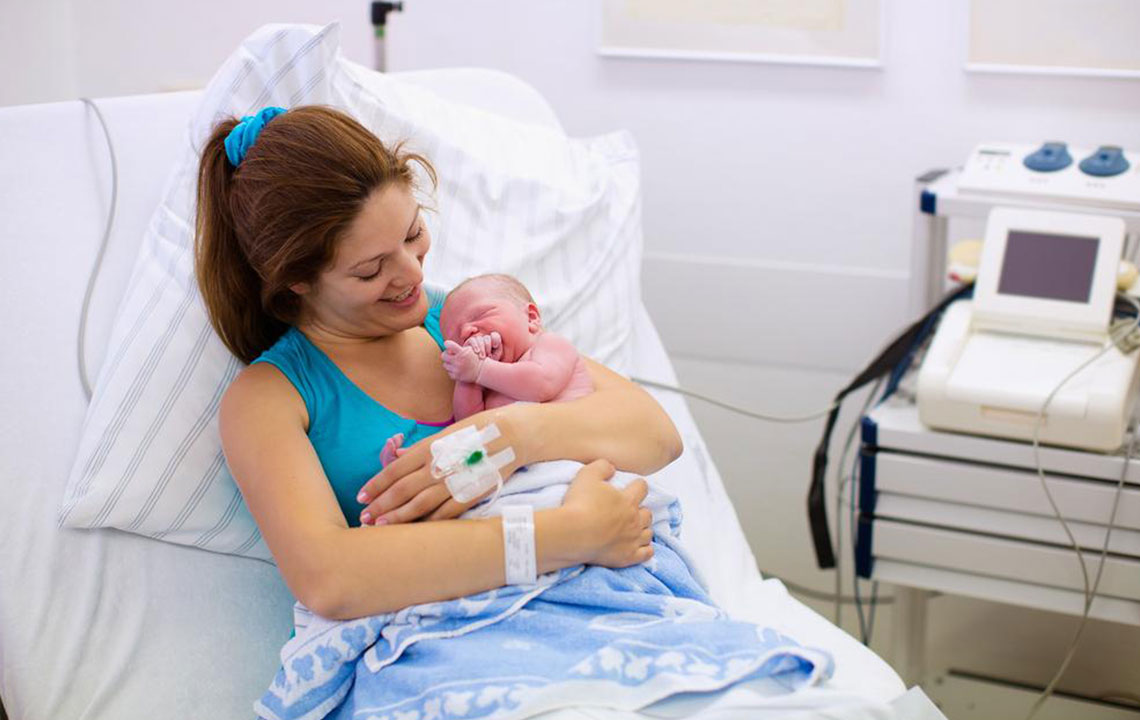Causes and Signs of Preterm Labor

Preterm labor is also known as premature labor. It happens when you’re pregnant, and your body is ready to give birth earlier than it should. Labor pains are considered to be premature if they occur three weeks before the expected due date. There are many ways in which doctors can prolong an early delivery.
The longer the baby grows inside your body, it is less likely that the baby can have problems after birth. There are many ways in which you can tell if you’re about to have preterm labor. Following are some of the signs of preterm labor that you should watch out for.
Causes of preterm labor
Many factors increase the risk of preterm labor. Some of them include:
Smoking : If you’re a chain smoker, there is a very high chance that excessive smoking can be one of the reasons.
Being overweight or underweight : Being overweight or underweight before your pregnancy can also be a cause.
No proper prenatal care : The risk increases if you don’t get enough prenatal care.
Alcohol : Consuming alcohol and other drugs are some of the factors that increase the risk.
Health conditions : Some health conditions like blood clotting, blood pressure, diabetes, and infections can affect you.
Birth defects : If you are pregnant with a baby that has congenital defects. The risk is also high if you have twins.
Family history : A family history of premature labor.
Signs of preterm labor
Here are a few signs of preterm labor from which you can predict if you’re about to have preterm labor.
- Excessive vaginal discharge
Vaginal discharge is normal if it’s in the normal levels. If you feel that the discharge is more than usual, then it is one of the signs of preterm labor.
- Change in type of discharge
If you’re leaking watery discharge, or if your discharge consists mostly of fluids, it is a sign of preterm labor. If your discharge is watery, similar to mucus, or sometimes even with blood, it is a sign. There are some cases where women experience a pink discharge tinged with blood.
- Vaginal bleeding
Vaginal bleeding is something that has to be taken seriously during pregnancy. If your vagina starts to bleed, it is best to seek medical help immediately.
- Pain in the abdomen
If you’re having sharp waves of pain in your abdomen, or pain that’s similar to menstrual cramps during pregnancy, then it is one of the warning signs. It should be taken seriously if you have four or more than that in just one hour. It doesn’t matter if they don’t hurt.
- Pressure in the pelvic area
If you have a feeling that the baby is pushing down, that is if you have a feeling pressure in the pelvic area, then you should consult a doctor immediately. It is best to have all medical help quickly accessible during pregnancy.
- Back pain
If you have lower back pain that is sometimes mild or occurs in rhythmic patterns; then it is one of the signs of preterm labor. It is more serious if you’re someone that has not had back pain earlier in recent times.
- Flu-like symptoms
Call your doctor immediately if you have symptoms that are related to the flu. Some of them include nausea, diarrhea, and vomiting. Even mild cases of such conditions should be taken seriously. Call your doctor if you have such conditions that last more than eight hours.
- Contractions
If you have contractions that frequently occur in every 10 minutes, call a doctor. Uterine tightening that is often painless is also considered one of the signs of preterm labor. There are some cases where women have our contractions more often than 10 minutes.
Identifying preterm labor
- Place your hands on your abdomen. If you feel that your uterus is softening and tightening, then that’s a contraction.
- Note down the time of your contractions. Write the time at which the contractions start, and do so for the next contractions.
- Try to prevent the contractions by standing straight, and also by changing your position. It is important to drink 2 to 3 glasses of water frequently.
Some women experience a condition known as Braxton Hicks contractions. They are commonly called false labor. They are harmless and sometimes erratic and stop if you move around or take rest. If you’re not sure about the type of contraction you have, it is best to seek medical advice. Acting fast can make a big difference when it comes to preterm labor. Always keep phone numbers of hospitals near you so that you could call in case of any doubts or emergency.
Keep in mind the above signs of preterm labor. It is best to consult a doctor if you have prolonged or other painful symptoms.


